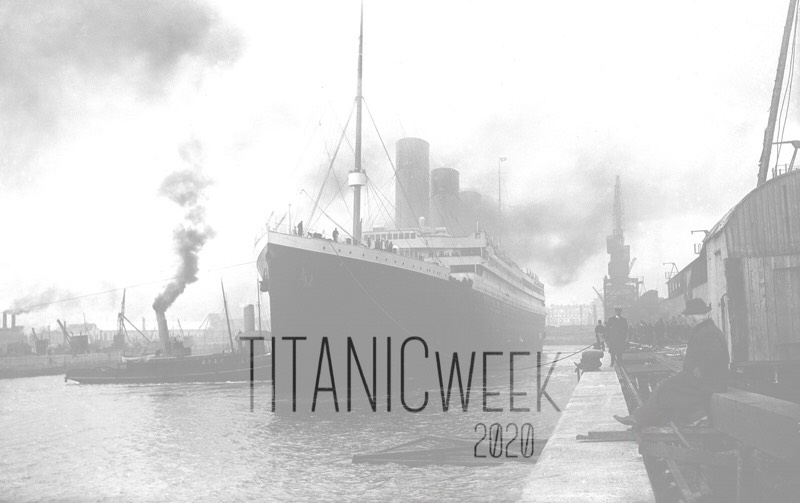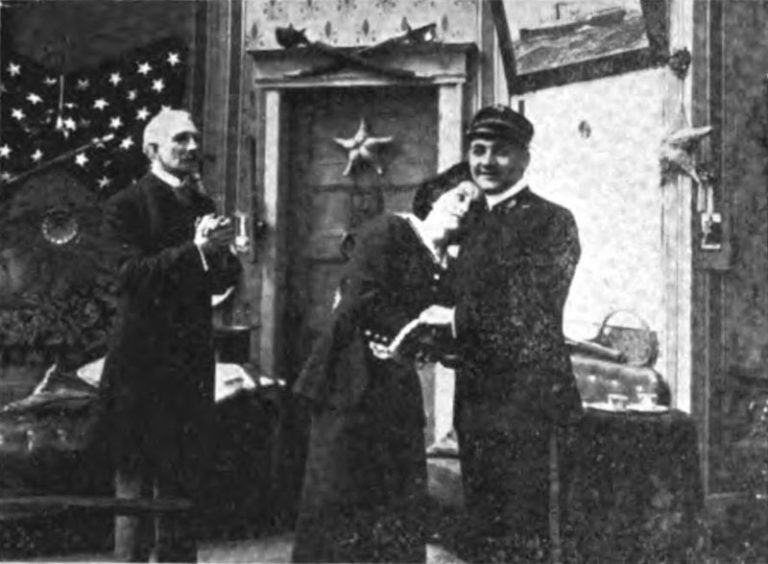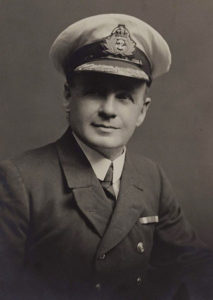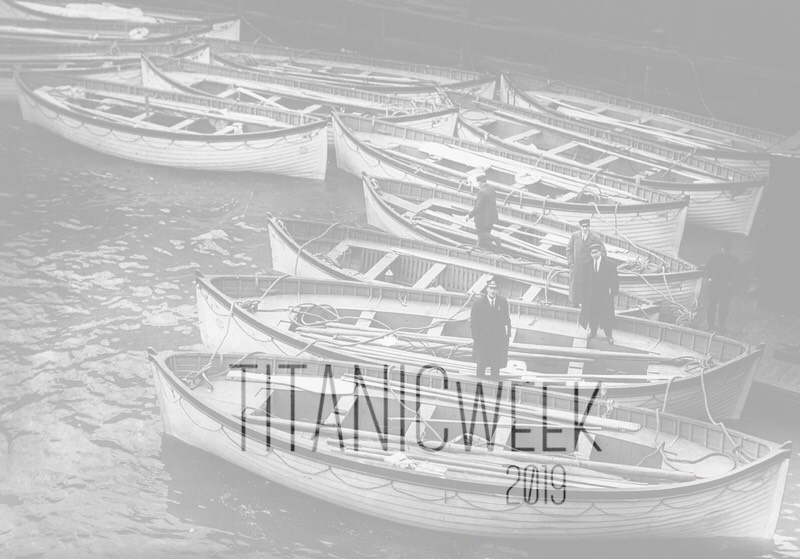"Dressed Up in Our Best": Benjamin Guggenheim & Victor Giglio
Benjamin Guggenheim was scheduled to set sail on the Lusitania, until she was put out of commission for repairs.
So he elected to sail on Titanic.
Ben was the fifth son of the Guggenheim dynasty; his father, Meyer Guggenheim, was a mining magnate. It’s rumored that Ben, born in 1865 in Philadelphia, was the stereotype of a playboy; unlike his four older brothers, he had never known a life without luxury. He’d also reportedly been spoiled by his overly doting mother.
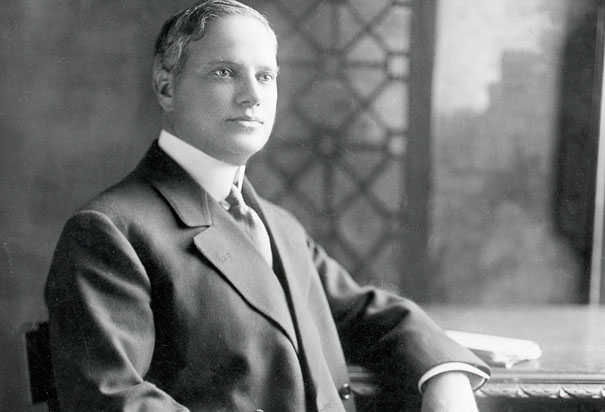
Benjamin Guggenheim.
Ben married a woman named Florette in 1884; they had three daughters. It was apparently a tense and nearly miserable union; per a 1978 biography by John Davis, Ben’s was hardly more than “a marriage of family fortunes."
Eventually, Ben found himself spending more and more time in Paris while Florette lived her life in New York.
Ben boarded Titanic in Cherbourg with his trusted valet Victor Giglio, as well as his chauffeur. Along with them was Ben’s mistress, Leontine Aubart, who was a performer in Paris, as well as her maid Emma Sagesser.
Ben was 46; Leontine, who went by “Ninette,” was 24.
There doesn’t appear to be much information about how Ben met Ninette, although it’s presumed it was while she was performing in Paris.
Nor do we know much about Ninette herself during the Titanic era. She was blonde and petite, and was a singer. That’s about all.
There has been speculation, however, that Ninette was actually a courtesan, but this has in no way been proven.
Whatever she was, she is rumored to have performed across Paris, particularly at a famed Montmartre bar called Cabaret du Lapin Agile.

Cabaret du Lapin Agile in Montmartre, Paris, circa 1905.
Ninette and Emma occupied cabin B-35; Ben and Victor, B-84. We don’t know how they behaved on the ship, but it can be assumed that they at least attempted to be discreet, given how scandalous they were.
Ninette and Emma were awoken by the collision with the iceberg. They went to alert Ben and Victor of the danger, and apparently woke them up in doing so.
Emma stated in an interview in 1937 that Victor chided her for making a fuss. Since the interview was conducted in German, interpretations vary, but essentially, Victor teased, “Oh, come on, icebergs? What even is an ‘iceberg’?”
Alongside Victor, Steward Henry Etches testified to attending to Ben in the moments after the collision.
They were in their room. I took the lifebelts out. The lifebelts in this cabin were in the wardrobe, in a small rack, and the cabin was only occupied by two. There were three lifebelts there, and I took the three out and put one on Mr. Guggenheim. He apparently had only gone to his room, for he answered the first knock. He said: "This will hurt." I said, "You have plenty of time, put on some clothes and I will be back in a few minutes."
Etches ended up pulling a large sweater over Ben’s lifebelt. On the boat deck, he saw the group moving from one lifeboat to another; Ben, he said, was trying to assist in loading the lifeboats and echoing the order of “Women first.”
Ben and Victor put Ninette and Emma in Lifeboat 9, despite their protests. Emma reported that Ben took a moment to speak to her in German. "We will soon each other again! It's just a repair. Tomorrow the Titanic will go on again."
The girls wore nothing but their nightclothes and light coats, and suffered from painful exposure as a result. Despite, this Ninette later waxed poetic in her account to the Daily Mirror dated May 13, 1912.
I had in my cabin jewels worth 4,000 (GPB) as well as many trunks of dresses and hats. One does not come from Paris and buy one's clothes in America. That is understood, is it not?
Nothing could I take with me; nothing at all. Just as we were, in our night clothes, [Emma] and I went on deck where the lifebelts were put around us. One the deck there was no commotion; none at all. Oh these English! How brave, how calm, how beautiful! I, who am patriotic french woman say that never can I forget that group of Englishmen- every one of them a perfect gentleman- calmly puffing cigarettes and cigars and watching the women and children being placed in the boats…
My last night of the upper decks was still a group of those Englishmen, still with cigarettes in mouth, facing the death so bravely that it was all the more terrible.
Ben and Victor were, in many opinions, the shining example of this valiant stoicism that Ninette so admired.
And so, the two men are often remembered for the final moments of their friendship, when they would not be persuaded to be parted.
After seeing off Ninette and Emma, it is reported that both Ben and Victor disappeared below decks.
When Etches saw them again, their lifebelts were gone, and they were dressed in fine evening attire. They looked as though the hadn't a care between them.
Things weren't so bad at first, but when I saw Mr. Guggenheim about three-quarters of an hour after the crash there was great excitement. What surprised me was that both Mr. Guggenheim and his secretary were dressed in their evening clothes. They had deliberately taken off their sweaters, and as nearly as I can remember they wore no lifebelts at all.
“’What's that for?’ I asked.
“We’ve dressed up in our best,’ replied Mr. Guggenheim, ‘and are prepared to go down like gentlemen.’
Ben then asked Etches to communicate a message to Florette back in New York City.
The steward produced a piece of paper. He had written the message on it, he said, to be certain that it would be correct. This was the brief message:
"If anything should happen to me, tell my wife in New York that I've done my best in doing my duty."
Apparently, this was not Ben’s only attempt to communicate a last message back to Florette. According to the Washington Times dated April 20, 1912, Steward John Johnson reported that he had also been given a task.
[Benjamin Guggenheim] sent for Johnson, who he knew was an expert swimmer, and for his secretary and asked them, if they should be saved, to get word to Mrs. Guggenheim.
"Tell her, Johnson," the steward related, "that I played the game straight to the end and that no woman was left on board this ship because Ben Guggenheim was a coward. Tell her that my last thoughts will be of her and our girls."
Guggenheim then, according to Johnson, lit a cigar and sauntered up to the boat deck and was engulfed with the ship.
The enduring mystery is why Ben Guggenheim never entered a lifeboat.
Lifeboat 9 was the fifth boat to be launched on the starboard side by First Officer William Murdoch, who let men aboard when there were no more women in his line of sight.
One could argue for chivalry, of course, but a recent discovery has led historians to believe that maybe Ben simply refused to abandon Victor.
A photo of Victor Giglio has come to light. Taken in 1901, it’s an image of Victor when he was only 13 and boarding at Ampleforth College in Yorkshire.
Victor’s father was Italian; his mother, Egyptian. This confirmed photo of Victor not only gives us an idea of what he would have looked like when he went down with the Titanic at all of 24 years old, but also demonstrates that he had dark eyes and a dark complexion—which almost guaranteed that he would have been refused a seat in a lifeboat.
This has led some to believe that Ben would not board a lifeboat while leaving his dear friend and confidante behind to die.
What happened to Benjamin Guggenheim and Victor Giglio as Titanic sank will never be known. Neither were ever recovered.
On board Carpathia, Ninette sent out a single telegram.
Moi sauvee mais Ben perdu
“I’m saved, but Ben lost”
SOURCE MATERIAL
https://www.encyclopedia-titanica.org/titanic-victim/benjamin-guggenheim.html
https://www.encyclopedia-titanica.org/titanic-victim/victor-giglio.html
https://www.bbc.com/news/uk-england-merseyside-17702282
https://www.encyclopedia-titanica.org/titanic-survivor/leontine-pauline-aubart.html
https://www.encyclopedia-titanica.org/community/threads/leontine-pauline-aubart.19928/
https://www.encyclopedia-titanica.org/titanic-survivor/emma-sagesser.html
